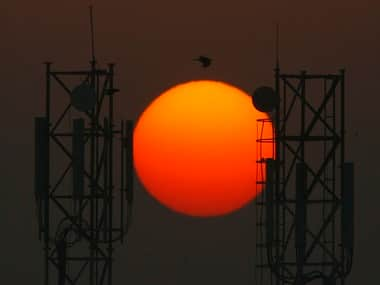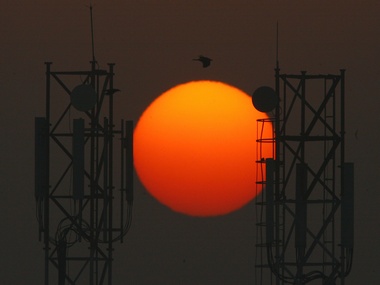Washington: Scientists have found some of the strongest evidence to date to explain what makes the Sun’s outer atmosphere so much hotter than its surface.
Researchers said that nanoflares - a constant peppering of impulsive bursts of heating, none of which can be individually detected - provide the mysterious extra heat.
The new observations come from just six minutes worth of data from one of NASA’s least expensive type of missions, a sounding rocket, researchers said.
[caption id=“attachment_76341” align=“alignleft” width=“380”]  Reuters[/caption]
The Sun’s visible surface, called the photosphere, is some 6,000 Kelvins, while the corona regularly reaches temperatures which are 300 times as hot.
Several theories have been offered for how the magnetic energy coursing through the corona is converted into the heat that raises the temperature.
The EUNIS rocket, short for Extreme Ultraviolet Normal Incidence Spectrograph, however, was equipped with a very sensitive version of an instrument called a spectrograph.
Spectrographs gather information about how much material is present at a given temperature, by recording different wavelengths of light.
EUNIS flew up nearly 321 km above the ground aboard a sounding rocket, a type of NASA mission that flies for only 15 minutes or so, and gathered about six minutes worth of observations from above the planet’s air.
During its flight, EUNIS scanned a pre-determined region on the Sun known to be magnetically complex, a so-called active region, which can often be the source of larger flares and coronal mass ejections.
As light from the region streamed into its spectrograph, the instrument separated the light into its various wavelengths.
Instead of producing a typical image of the Sun, the wavelengths with larger amounts of light are each represented by a vertical line called an emission line.
Each emission line, in turn, represents material at a unique temperature on the Sun. Further analysis can identify the density and movement of the material as well.
The EUNIS spectrograph was tuned into a range of wavelengths useful for spotting material at temperatures of 10 million Kelvin - temperatures that are a signature of nanoflares.
Scientists have hypothesised that a myriad of nanoflares could heat up solar material in the atmosphere to temperatures of up to 10 million Kelvins.
This material would cool very rapidly, producing ample solar material at the 1 to 3 million degrees regularly seen in the corona. However, the faint presence of that extremely hot material should remain.
Looking over their six minutes of data, the EUNIS team spotted a wavelength of light corresponding to that 10 million degree material.
PTI


)
)
)
)
)
)
)
)
)



